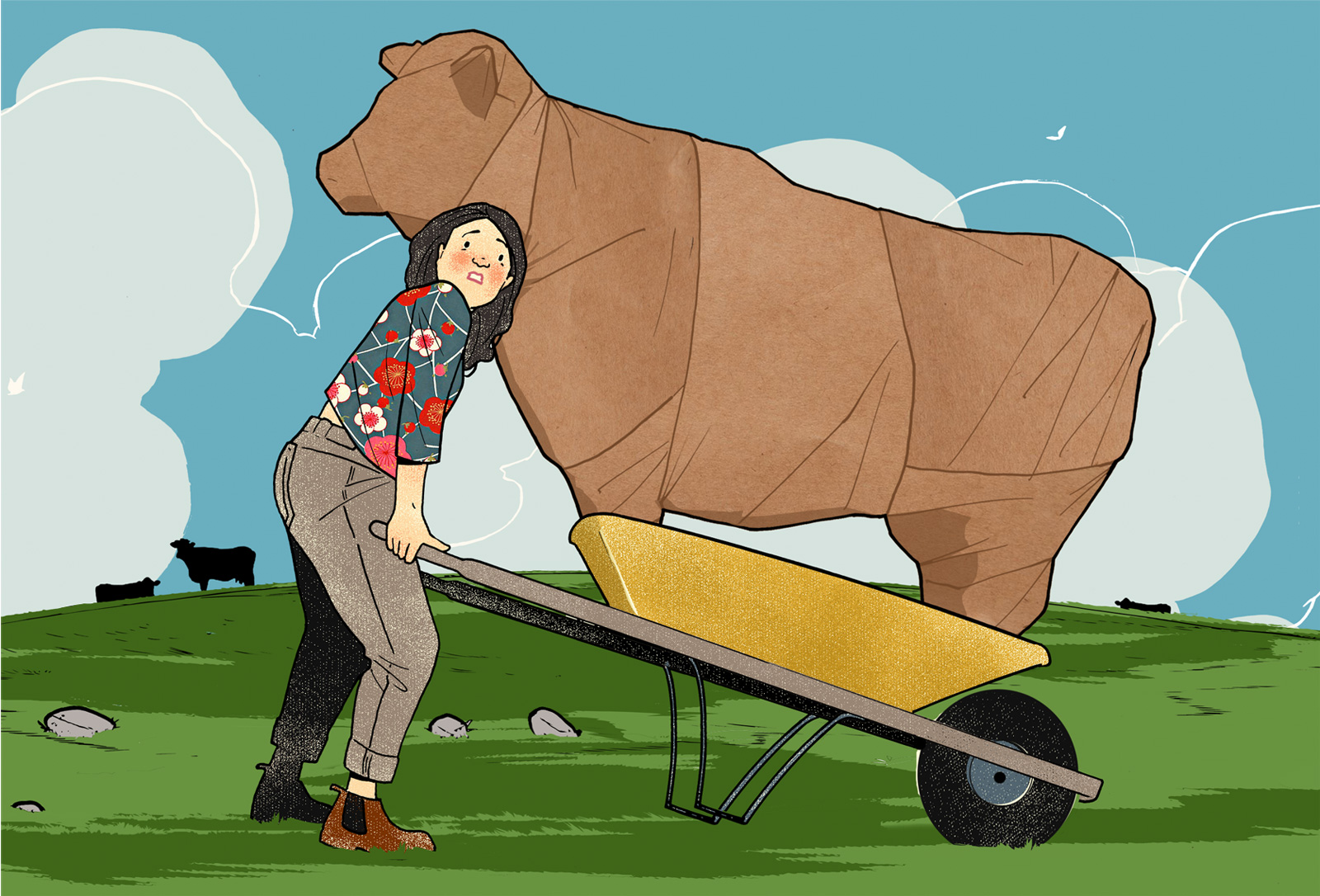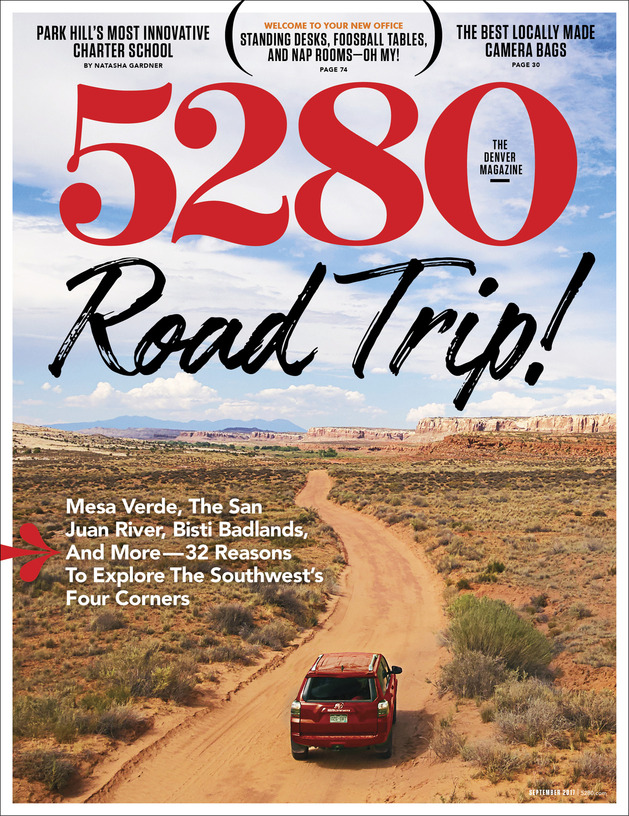The Local newsletter is your free, daily guide to life in Colorado. For locals, by locals.
When my husband and I walked into Elizabeth Locker Plant on a Saturday morning last December, I was already questioning our decision to order a fourth of a cow—a “quarter beef” in industry lingo—from Sedalia’s Pine Cliff Ranch (PCR). I had a check for $586 (we’d mailed the $100 deposit a few weeks back), a trunk full of empty laundry hampers for toting all 98 pounds of grass-fed and grass-finished beef back to our house, and no idea what to expect. Were we walking into a morbid slaughterhouse scene? Instead, behind the heavy metal door, we found a clean, spare concrete room lined with freezers, each filled to the top with misshapen bricks of frozen, paper-wrapped meat. Soon enough, an employee was wheeling our beef to our car in a metal cart and we were heading home. You know those scenes in music videos when rappers show off towering stacks of cash? I felt sort of like that (but, you know, with meat) as we transferred the obscenely abundant haul into our chest freezer, where it took up almost half of the seven-cubic-foot unit.
I’d gone this route for myriad reasons: I wanted to avoid supermarket “mystery meat,” as PCR’s manager, Trace Hall, calls it, in favor of a more sustainable, humanely raised, healthier, and better-tasting product. I wanted to support a local producer. And, honestly, I wanted to save money. Last September, I picked PCR for its commitment to land stewardship and planned rotational grazing. After I established contact via email, PCR even offered us the opportunity to come to the ranch and meet our “lucky” cow. I appreciated the transparency but graciously declined. (Unfortunately, PCR will no longer be selling directly to consumers; see “Try It” for other options.)
A few days after the pickup, I unwrapped a thawed package labeled “Loin T-Bone Steak” and examined it. It didn’t look like the marbled, grain-fed specimens you buy at the grocery store. Rather, the meat had a shiny, almost bluish-red hue and very little fat. Parts were sheathed in a thin silver skin, a membrane of connective tissue that, I’d soon discover, was tough and inedible if left on the meat during cooking.
I consider myself a capable and adventurous home cook—I’ve mastered the fluted foot of a French macaron and happily devoted weeks to tracking down obscure ingredients for curry pastes—but this was a new challenge. Not only was the grass-fed meat leaner and prone to overcooking, but many of the cuts (apart from familiar bits like ground beef, porterhouse steaks, and stew meat) were alien to me. How best to prepare “Chuck Seven-Bone Roast,” “Blade Roast,” and “Rib Steak Small End”? I turned to Google—and Matt Koster of Black Forest–based Corner Post Meats, which sells at the Union Station farmers’ market and offers bulk purchasing options, who told me my bewilderment was a common reaction. His suggestion? “Broaden your mind and experiment.” So I did.
I cooked a Taiwanese braised-beef noodle soup with that blade roast. I made my Texas-born father proud with a classic chicken-fried steak using a round. I coaxed the brisket to smoky, juicy perfection on the grill. I ground my own custom burger blend. I even mastered Cook’s Illustrated’s technique for searing and roasting frozen steaks to a perfect medium-rare. In every instance, the beef shone with a deep, mineral flavor. It sounds silly, but we just felt good after eating it.
As of midsummer, we were still working through the seemingly endless supply of meat in our freezer. All in, we paid about $7 per pound for around a year’s worth of beef. Not a bad deal—especially when you factor in the unexpected culinary education that came as part of the package.
TRY IT: Many ranches slaughter their cattle in late fall and early winter after the animals have spent the summer grazing (read: fattening up). The beef must then hang for 10 days or more to develop flavor and tenderness before it’s processed and you can pick it up. Visit Eat Wild (or chat up producers at your local farmers’ market) to find a ranch employing practices you like.









